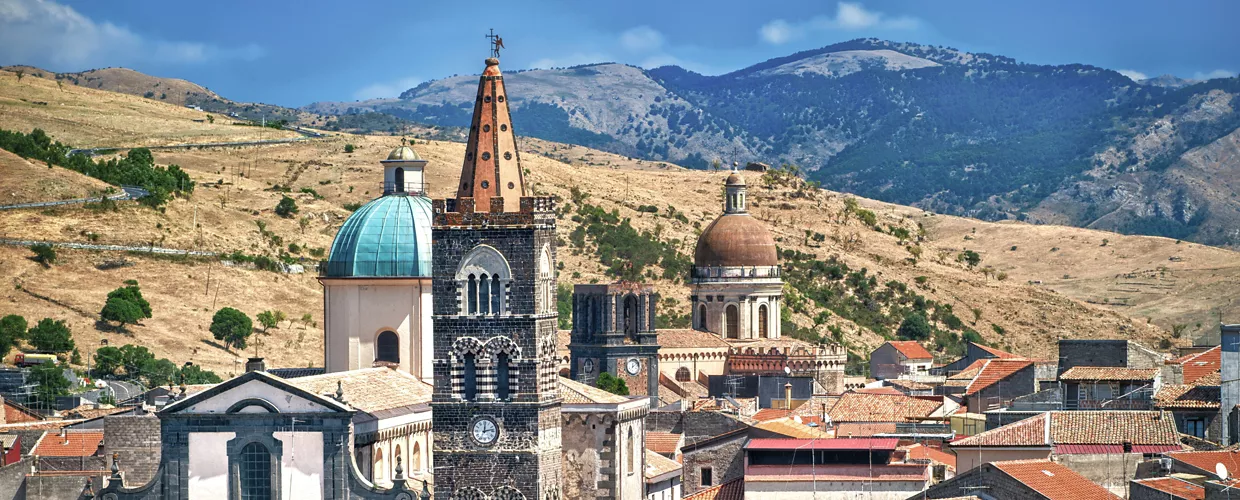This content was automatically translated. View the original text.

Overview
On the northern slopes of the volcano, bordering with the Nebrodi mountains, on the final lava escarpment of a prehistoric flow, amidst high terraces of vineyards (up to 1,000 metres in altitude), in Randazzo you have reached the closest inhabited point to Etna's main crater. Byzantine in origin, Swabian and medieval in character, with the remains of walls still visible in the vicinity of Porta Aragonese, it has three important churches that symbolise the three main districts of the town, once inhabited by communities that spoke different dialects: Latins in Santa Maria, Greeks in San Nicola and Lombards in San Martino. The most important church is that of Santa Maria Assunta, built from lava stone in the Norman-Swabian style. A valuable iconographic document preserved here is the Salvation of Randazzo, a 16th-century panel with a view of the city at the time. The church of San Nicola is the largest one in the city, dating from the 14th century but rebuilt at the end of the 16th century and with an 18th-century bell tower. It houses works by the Gaginis, a family of Italian sculptors and architects very prominent in this area of Sicily. The other church is that of San Martino, of Swabian foundation, i.e. from the 13th century, which you cannot fail to notice as you walk through Randazzo thanks to the magnificent bell tower beside it. There is also an archaeological museum, but don't miss the Puppet Opera Museum with its collection of 36 puppets from the Catanian school of the late 19th and early 20th century.
95036 Randazzo CT, Italia